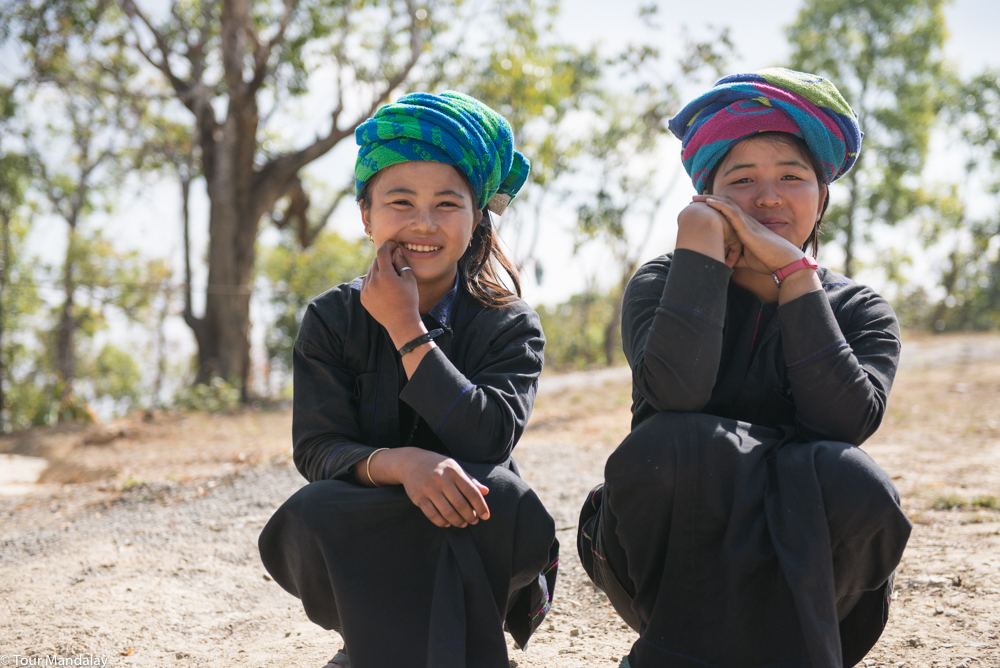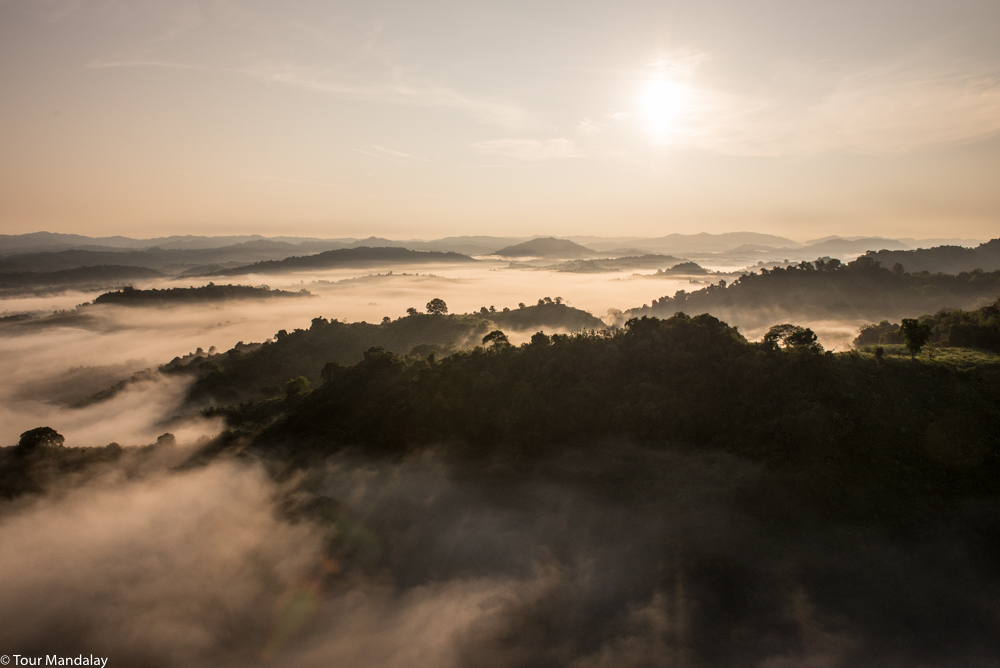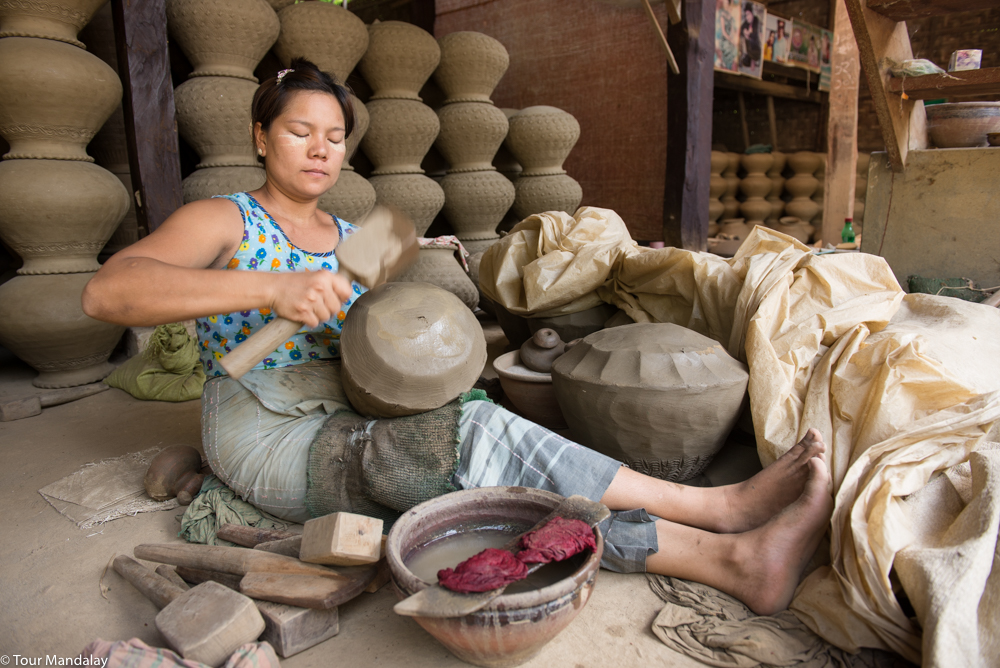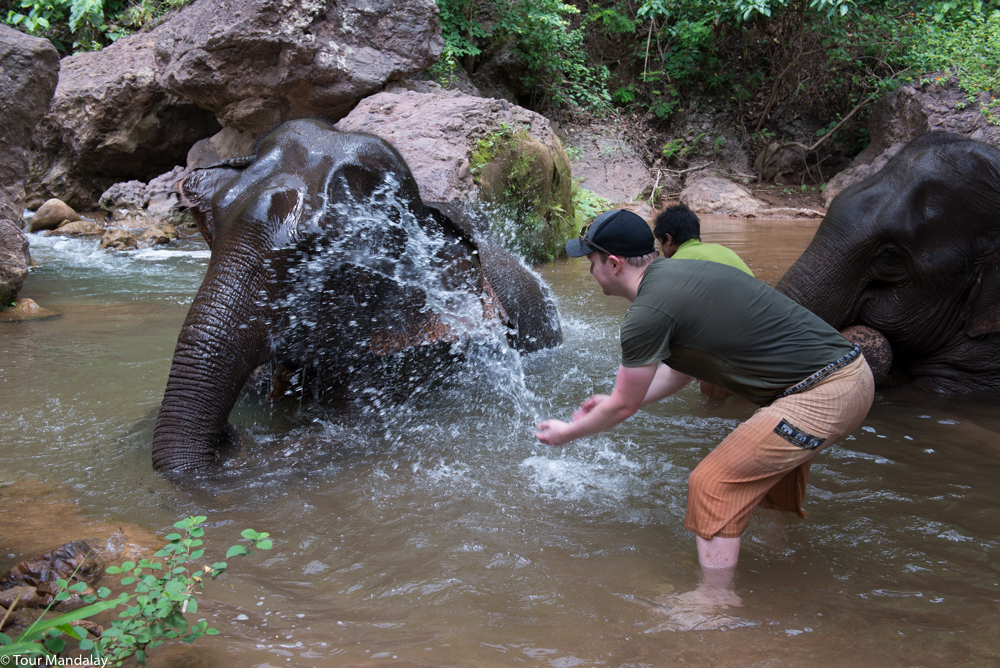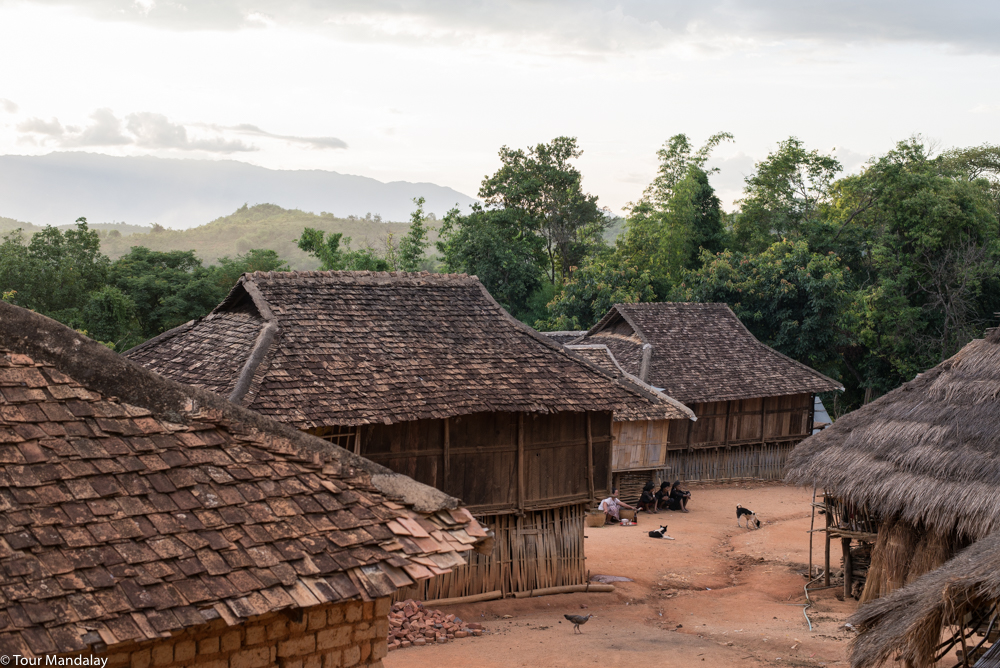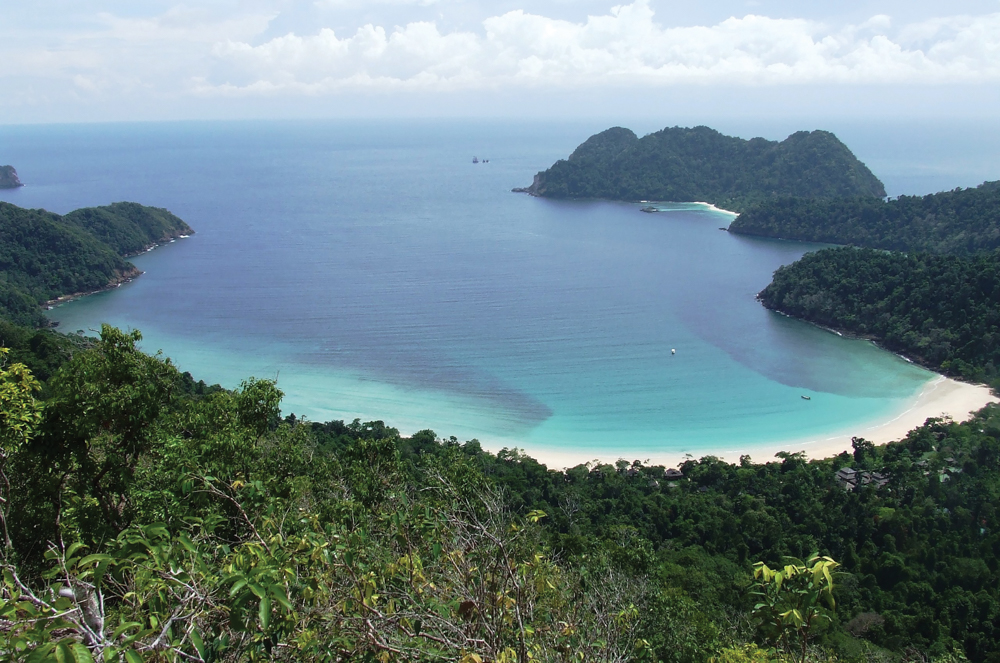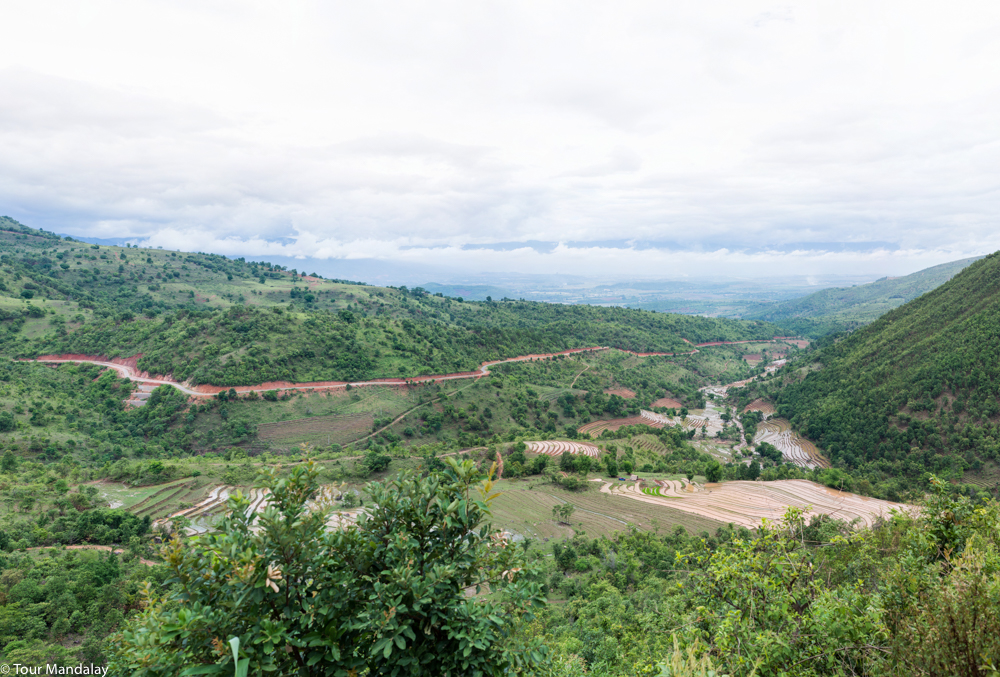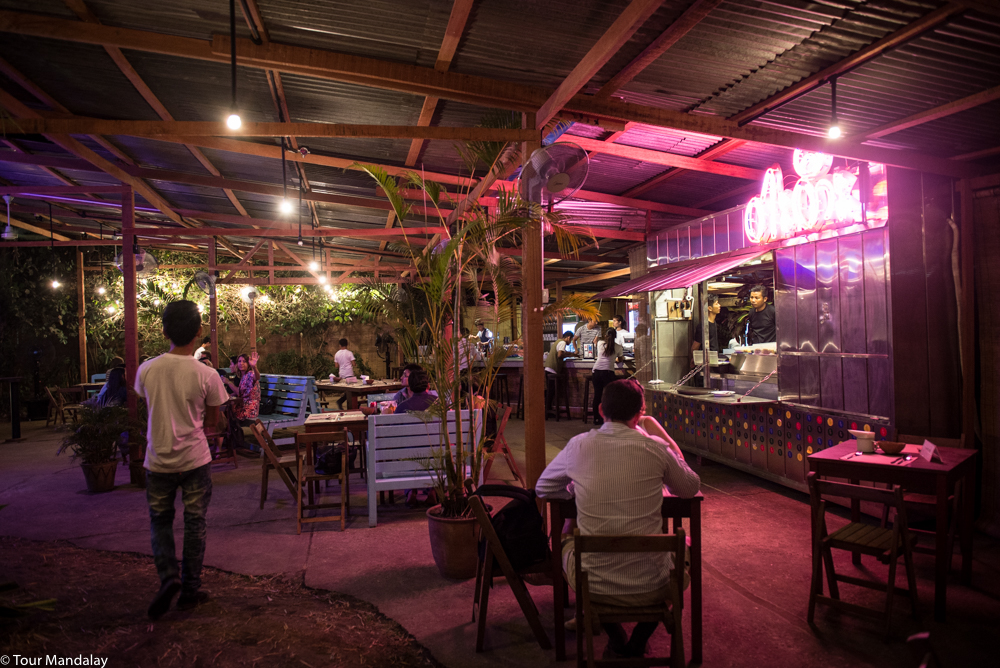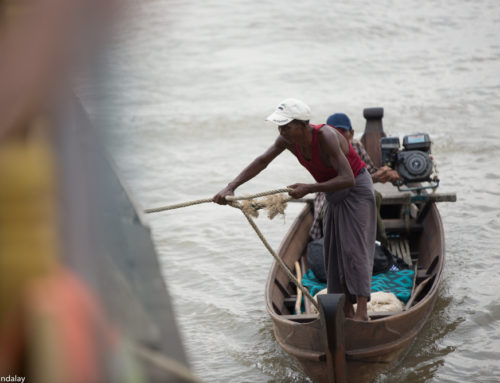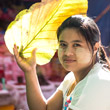With just over four million tourist arrivals recorded in 2015, it is fair to say that Myanmar has well and truly opened up to the world. Instead of promoting it for its virgin, undiscovered state, how about celebrating the fact it is now undergoing an important political, economic and social transition? Anyone lucky enough to make their way out here during this time has a real opportunity to be at the forefront of this change, whilst simultaneously playing a key role in the country’s economic and international development.
Keen to show off how far the country has come, Tour Mandalay have carefully selected ten unique recommendations that we believe are all worth trialling in the 2016-17 season. Doing so will provide you with a first-hand taste of the progress, whilst ensuring an exclusive travel experience at the same time. So, in no particular order.
1) Community involvement projects
With annual tourist numbers set to increase to 7.5 million by the end of 2020, we are delighted that interest in our Golden Land is finally picking up. However, the country still faces many challenges in ensuring that these visitors travel responsibly. One thing we have been particularly impressed with this year is the development of community-based involvement projects. We have seen this take off in Kayah State (thanks to the International Trade Centre’s guidance), the Danu Self-Administered Zone (thanks to Myanmar Institute for Integrated Development, GIZ Myanmar and Danu Literature, Culture and Development Association) and the Pa’O region east of the iconic Inle Lake (thanks to Community Involved Tourism).
The above-mentioned organisations work closely with the respective communities to help develop a long-term sustainable tourism strategy that will help to preserve culture, provide education and much needed economic stimulation. Take CIT (Community Involved Tourism), for example, establishing the first B&B project in the Pa’O region aside, CIT aims to develop truly authentic local experiences, bring a source of income to otherwise ostracised communities, create more job opportunities, maintain village traditions and teach important skills such as cooking techniques, general hygiene and customer service. Assuming the development is successful, they then plan to share this knowledge with neighbouring communities in Shan State.
In February 2015, Tour Mandalay had the pleasure of trying out one of CIT’s carefully planned excursions for ourselves. This saw us hike 28km from Nanpan (located at the bottom of Inle Lake) to the Pa’O village of Hti Ne. Along the way we passed through bamboo forests, picturesque farming villages, learnt about local industry, walked through harvested rice padi fields, up windy hill paths, over streams and thanks to our guide being from the community, enjoyed natural conversation with multiple passers by. Best of all, when we reached Hti Ne, we were treated to an authentic vegetarian Pa-O meal, whilst looking out over a stunning view of the village and its surrounds.
This is just one of many trekking packages arranged by CIT. For more information, please contact Tour Mandalay directly.
2) Oriental Ballooning Ngapali
Thought a trip to Ngapali was all about sun, sea and sand? Well think again. This new flight from Oriental Ballooning is a real game changer and we can confidently say that it more than rivals any of the other hot air balloon experiences currently offered. Here’s a detailed take on the experience by our General Manager, Alex Shaw, who was one of the first passengers to trial the flight back in December 2015.
Just before coming to Myanmar, I watched an interesting three-part documentary called Wild Burma filmed by the BBC, if you haven’t already, be sure to search it out. One thing I’ve never been able forget is the short film footage that captured the 1000km long, untouched Rakhine jungle, with its rugged green canopy layer and exotic bird species flying from tree to tree. Having now explored the majority of Myanmar’s accessible ‘off the beaten track’ destinations, I’m still yet to experience anything like this, which has led me to question as to whether or not this wild and remote side even exists. Of course it does, but unless you manage to obtain special government permits, or are prepared to sleep overnight in leach and snake infested jungles, it’s likely you will never truly experience this side as a tourist. Even in the relatively unexplored areas of Chin State, Kyaingtong and Putao, you are still restricted to tried and tested trails and it’s not possible to venture any further due to a distinct lack of accommodation, internal conflict, or local government travel restrictions. With tourist numbers estimated to increase to 7.5 – 10 million before 2020, what was once considered remote will now start to feel like it’s well and truly opened up and this may lead to some travellers coming back disappointed.
Thanks to the help of aviation, I’m pleased to say that I finally managed to catch a glimpse of what I came looking for and here’s my take on it. In order to best guarantee a glimpse of the mountains shrouded in a light layer of morning mist, it is necessary to depart the hotel at approximately 05:00 – 05:30. The landing site you take off from will depend on the direction of the wind, but most transfers will take approximately 30-40 minutes. Depending on the hotel you stay at, the first few minutes of the journey is relatively smooth, then it’s necessary to turn off onto local roads that are more often bumpy than not.
Needless to say, the inflation of the balloon’s envelope is greeted with huge intrigue and many local passersby stop just to observe the spectacle. For many, this will be the first time they have ever laid eyes on a hot air balloon and it’s understandably emotional. In fact, I still remember how I felt when I was a child.
Once the safety briefing had been completed by our pilot Allie (a superwoman in every sense of the word), we patiently waited for the balloon to stand upright and hopped into the plush 4 man (5 if you include the pilot) wicker basket. Within seconds we ascended to the sky, waving goodbye to the happy locals and Oriental Ballooning’s Landrover parked in the distance.
As the sun rises the mist starts to clear giving way to a breath-taking sight. As you can see from the photographs, the focus of this ride is not necessarily the coast, but more the surrounding landscape. It’s dotted with quaint temples, misty mountain ranges, luscious jungle, meandering rivers and best of all, the area is home to some extremely rare species of wildlife.
As with any balloon flight, the duration is determined by many factors such as the wind direction and its speed. The first flight for example saw wind speeds of over 12 knots and the direction was aimed at the coast. This saw us fly for only 40 minutes. The wind speed on our second flight however was approximately 3 knots and thanks to a favourable wind direction, we were able to fly for just over one hour. This gave us plenty of time to marvel at the vast jungle, which was made to look even more picturesque thanks to the sun’s rays cutting through the mist.
As we dropped down towards the jungle’s canopy layer, we managed to spot a small number of tropical birds and were immediately mesmerised by the hypnotic sounds echoing out from deep within. For a moment it felt as though we had been whisked away to the Amazon rainforest.
We then flew over a bit more jungle, until we reached a clearing, which eventually gave way to colourful patchwork fields. It was around here where we landed, only to be chased down by a group of excited children. For me, this was also a highlight of the experience as it provided a unique chance to interact with people who were extremely appreciative to have us in their presence.
3) Yandabo
Located between Mandalay and Bagan on the western bank of the Irrawaddy River, Yandabo is a charming village that has the potential to add immediate cultural spice to even the most straightforward of itinerary routings. For centuries, the village has been known for its production of earthenware pottery. Just a quick wander through the village will provide a first hand glimpse of the production process, ranging from the shaping of pots to the fascinating decoration technique. History buffs may be interested to know that the Treaty of Yandabo was signed here, the peace treaty that ended the First Anglo Burmese War back in 1826.
Thanks to the newly opened Yandabo Home, it is now possible to stay here overnight. Overlooking the Irrawaddy’s glistening waters, Yandabo Home provides its guests with a clean and comfortable base from which to explore the village. Each of the property’s 12 rooms have been thoughtfully decorated in a minimalist, yet modern style. By staying here, one can explore the village with the help of Yandabo home’s staff, most of whom live a short walk away. Through the guesthouse, it is also possible to arrange an excursion to a nearby farming village to watch the buffalos bathing at sunset.
4) Green Hill Valley
This is by no means new product, but for Tour Mandalay, the experience at Green Hill Valley Elephant Camp is still one of the most rewarding in the country. Located on the outskirts of Kalaw, Green Hill Valley is not your average elephant camp. More of a retirement home if anything, it provides a wonderful opportunity to naturally interact with the resident elephants, whilst participating in a range of activities such as bathing and feeding. Although it is occasionally permitted, riding is not the main focus and should not be expected on the day.
One of the most interesting activities associated with a trip here is the chance to hike through the luscious tropical jungle, which is where the elephants are left free to roam in the evenings. Not only is this a great way to learn more about the elephant’s natural habitat, but it will also provide you with the opportunity to escape the typical tourist trail and truly appreciate the vast amount of green space present on the outskirts of Kalaw.
5) Kyaingtong (Kengtung)
Once the capital of the infamous Golden Triangle, Kyaingtong can be found in the far eastern reaches of Shan State, close to the borders of China, Laos and Thailand. Now considered one of most remote destinations accessible to tourists, the town exists today as a cultural melting pot, home to various tribes such as the Wa, Shan, Akha and Lahu. Although pleasant, the town itself has relatively little to offer tourists, with the main attractions being the morning market, One Tree Hill (a ginormous 250-year old tree) and several picturesque lakes. In order to truly appreciate the region’s diversity, a short journey into one of the surrounding villages is a must. Here you will find an abundance of culture and breath-taking trekking routes, many of which lead through beautifully terraced landscape and deep into the heart of the region’s tribal wilds. One of the most popular terminates in Loimwe, the former location of the headquarters of the British District Commissioner in colonial Burma.
6) Putao
Famous for its endemic bird species and rare orchid varieties, Putao is a small town surrounded by snow-capped mountains, freshwater streams and luscious forest. Hkakabo Razi, the highest mountain in South East Asia is also visible from here. Using Putao as a base, one can carry out a range of adventurous excursions including trekking, mountaineering and white water rafting. It is also possible to venture deep into the Himalayan foothills, but these expeditions are reserved for only the most experienced of mountaineers. The limited number of Putao bound flights mean that it is necessary to coordinate your plans around the dates available – that said, access is still not guaranteed as airlines will only operate if there are sufficient passenger numbers to justify flying. Those that make it here however, will be rewarded with one of the most unforgettable travel experiences Myanmar has to offer.
Fans of Hpa-an Lodge will be pleased to know that the owners behind that incredibly successful venture will open Hotel Putao, a spacious eight acre property with 35 rooms divided into three categories; Superior (13) Deluxe (20) and Villa (2). Naturally, Putao Hotel arranges trekking tours and BMW mountain bikes can also be rented here.
7) Mergui (Myeik Archipelago)
If time, budget and availability permits, an adventure into the far reaches of Myanmar’s deep south comes highly recommended. Here you will find the Mergui (Myeik) Archipelago, a vast expanse of tropical ocean paradise, dotted with close to 800, mostly inhabited islands. Due to its remote nature and lack of comfortable accommodation, very few make it here, meaning those that do will be rewarded with one of the most exclusive beach experiences the world has to offer.
Just by looking at the names listed on the maritime chart, for example, Chelmsford Point and Charles Ross Hill, it is evident that little has changed here since the country’s days of colonial administration. This is also made clear from the vast number of deserted islands, most of which are covered in white sand, palm trees and dense patches of wild jungle. Now picture birds of prey flying overhead, the sound of playful gibbons echoing in the distance, and an abundance of rare and wonderful sea life just inches below the ocean’s surface. Then you have the shy Moken people, an Austronesian ethnic group with close to 3000 members that still choose to lead a traditional, semi-nomadic lifestyle. Due to their shy nature and limited number, it is not often visitors will cross paths with one of the region’s inhabitants – in the case you are lucky enough to do so, it is likely they will be diving for sea cucumbers, fishing, or bartering away at one of the local island’s local pop-up markets.
Relaxation opportunities here are ample, and due to a lack of network coverage, you are more likely to spend time reading through one of your favourite novels as opposed to keeping your work’s inbox up-to-date. It is not just about relaxation however, as the more adventurous have the option of exploring tropical forests, hiking over valleys, kayaking through enchanted mangroves and diving beneath the surface of the beautiful, coral rich Andaman Sea.
For one of the most exciting Myanmar adventures, why not take to the sea for a few days in one of Burma Boating’s impressive range of classic sailing yachts? With shared, or chartered opportunities available, it is possible to tailor the experience to your individual needs and budget requirements.
8) Border crossings
Overland border crossings are fast opening up, which is surely a great indication of how quickly things are changing. At the time of writing, it was only possible to pass freely between Myanmar and Thailand. Travel to India and China via Myanmar (and vice versa) is also possible, but a permit for this must be obtained well in advance of travel. In the near future it is likely we will see border crossings in and out of Bangladesh and Laos open-up, but at present, travel is not permitted. Brief details of two of the most easy to arrange border crossings can be found below.
Tachileik/Mae Sai – One of the most popular border crossings connecting Myanmar and Thailand. It is possible to travel as far as Kyaingtong, without the need for a permit. Both Tachileik and Kyaingtong have airports offering domestic flights to Yangon, Mandalay and Heho (Inle Lake region). Thai Baht is the main form of currency used here.
Myawaddy/Mae Sot – A gateway into Myanmar’s Karen State and a convenient point from which to explore places like Hpa An, Golden Rock and Moulmein. Due to its proximity to Bangkok and Chiang Mai, it is also one of the most practical and easy to arrange.
9) Naypyidaw
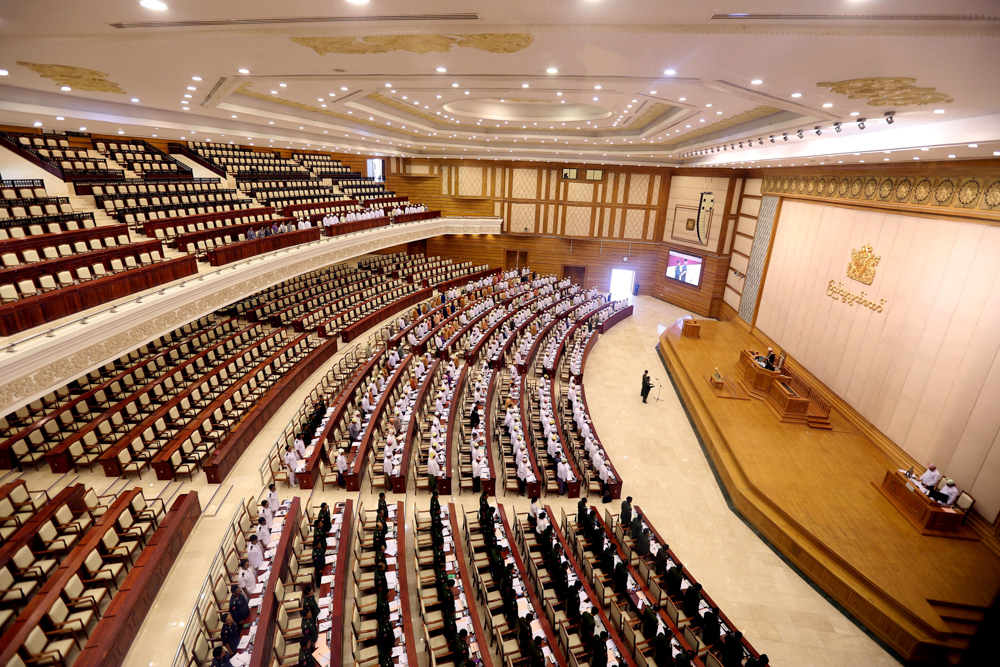
Politicians sit for parliament session in Naypyidaw (please note it is not possible to visit when session is in progress)
Now we know the inclusion of Naypyidaw in our top ten experiences is likely to receive a lot of stick, but please hear us out. As per the introduction to this article, Myanmar is now undergoing an important political, economic and social transition and Naypyidaw is at the heart of it. For historians, architects, or even general sceptics, a trip here will provide a unique insight into the country’s workings and potentially many hours of stimulating debate. Myanmar’s capital is home to so much more than 20 lane highways and uninhabbited luxury compounds. If timed right, it’s possible to take a step inside the Hluttaw, Myanmar’s parliament, to see where the country’s decision making takes place – ten years ago, this would have been well off limits! Then you have Uppatasanti Pagoda, a life size replica of Shwedagon Pagoda and one of the few pagodas where it is possible to walk inside. For us however, the highlight would surely be the sunset oxcart ride around one of the farming villages that dot the capital’s outskirts. Thanks to no traffic and a ridiculously effient airport, it also serves as a great hub for your first or final night.
10) Yangon, a foodie’s heaven
Myanmar’s commercial capital is currently in the midst of an exciting restaurant boom, which has seen a variety of establishments pop-up all over the city. From Malaysian hawker food, to high-end yakiniku joints, the last 18 months has seen talented chefs flock to Yangon from all over the world. Here is a small selection of our favourites.
Port Autonomy – Originally started as a pop-up project at Lanthit Jetty, Port Autonomy has now grown to become one of Yangon’s finest home-grown institutions. Head chef, Hawaiian born Kevin Ching, serves up a wonderful Asian inspired fusion menu with a couple of our favourites being the King George Cuban Sandwich and Saigon taco with lemongrass meatballs.
La Carovana – Located in what was once the old Le Planteur, La Carovana is a fine dining Mediterranean restaurant managed by the same geniuses that brought you Port Autonomy. Kevin Ching’s brilliance, coupled with his appreciation for fresh, local and authentic produce has helped to create a Mediterranean restaurant with a difference.
Sharky’s – Keen to know where the food on your plate has come from? Well everything on Sharky’s mostly organic menu has either been sourced or produced locally. With their own farms and two restaurants (one located in a restored colonial building on Lower Pansodan Road), it is fair to say that they’re at the forefront of this culinary revolution.
Shwe Sa Bwe – Founded by Francois Stoupan in early 2013, Shwe Sa Bwe is a hospitality training center that aims to provide training to disadvantaged Myanmar youth. Located close to Inya Lake, Shwe Sa Bwe is the perfect dining option for anyone looking to get a taste of Yangon’s fine dining scene in a not so pretentious environment.
Rangoon Tea House – Located on the lower block of Pansodan Road, the Rangoon Tea House is a must for anyone looking to experience a typical tea house menu in a comfortable, yet authentic setting. Even though the interior feels slightly modern in style, the carefully restored space is reminiscent of the grand teahouses you would have found in Yangon during the British colonial heyday and some parts of India.
To view a printable PDF of these top 10 experiences please click here.

